Utah’s flag was wrong for decades
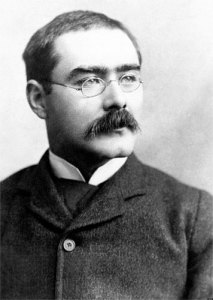
The British author Rudyard Kipling liked flags, but not Utah. The state doesn’t care because, for one thing, it’s more interested in marking the 120th anniversary of its entry into the United States on Jan. 4, 1896. It’s also interested in its state flag, which was wrong for years.
Kipling wrote a poem titled “The English flag,” in which the four winds declare they couldn’t defeat the banner with their powers. As for Utah, he expressed his feelings by sneering: “When I went there, the place was full of people who would have been much better for a washing.”
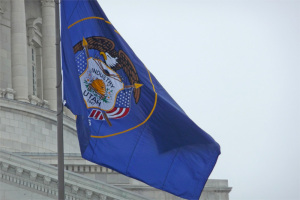
When Utah was settled by Mormons, they named the territory Deseret, meaning beehive. When statehood came, it was Utah that entered, carrying what is sometimes called “the beehive flag.” That’s because the state seal and banner include a hive to represent the busy-ness of its citizens.
A 1917 issue of The National Geographic describes the Utah flag as “consisting of a blue field with a border of gold and a design in the center.” That design included a shield and an eagle for starters. As the state’s website puts it, “a bald eagle, the United States national bird, perches atop the shield and symbolizes protection in peace and war. The sego lily is a symbol of peace and a U.S. flag appears on each side, symbolizing Utah’s support to the nation.”
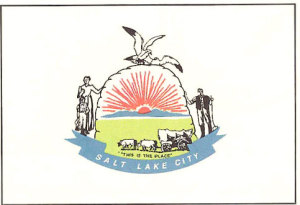
In short, the Utah state flag contains two American flags. It also contains two years: 1847, when members of the Latter-Day Saints came into the territory, and 1896, honoring statehood. To top it off, the top of the flag bears the word “Industry.”
Then something strange occurred: Unauthorized changes were made to the flag’s design, and the wrong state flag was flown for nearly 90 years. The correct flag wasn’t restored until 2011.
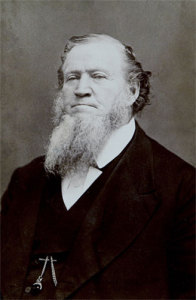
Utah’s capital, Salt Lake City, has had two municipal flags in the span of four decades. The first one, adopted in 1969, imitates the state banner by featuring the outline of a beehive. Inside it were a setting sun and oxen pulling a covered wagon. Flanking the beehive are images of a pioneer woman with a child and a pioneer man holding a shovel.
Beneath them runs the slogan, “This is the place,” and a ribbon bearing the city’s name. The quotation is credited to Mormon leader Brigham Young, asserting that his wandering people had finally arrived at their home.
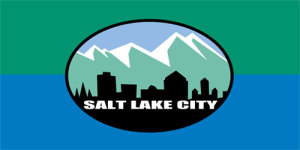
The busy-ness – or buzzy-ness – of the Utahans continues to be reflected in the capital’s municipal flag by the appearance of two seagulls atop the hive’s outline. The gulls reflect the story of how they appeared out of nowhere to devour insects threatening the crops of the new settlers.
In 2006, the capital went in another direction, adopting a far less cluttered city flag. The new one contains images of mountains and a cityscape, below which appear three words: “Salt Lake City.”
